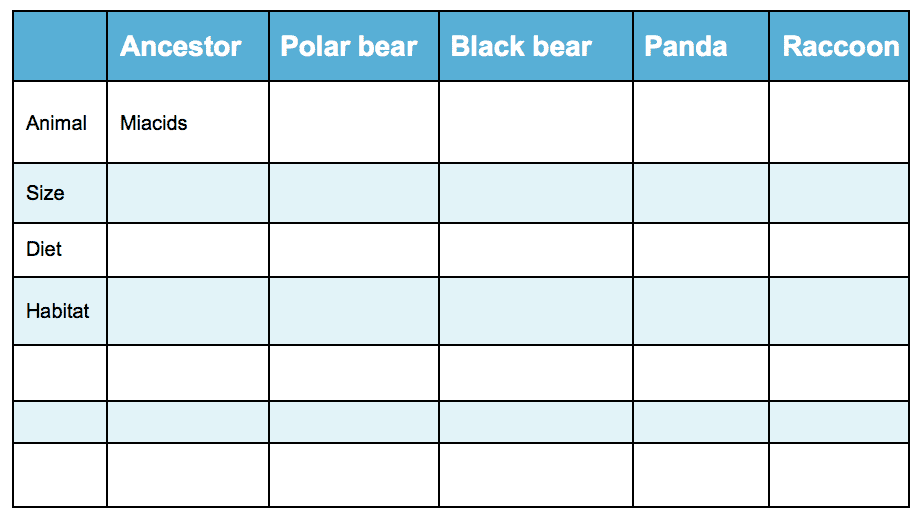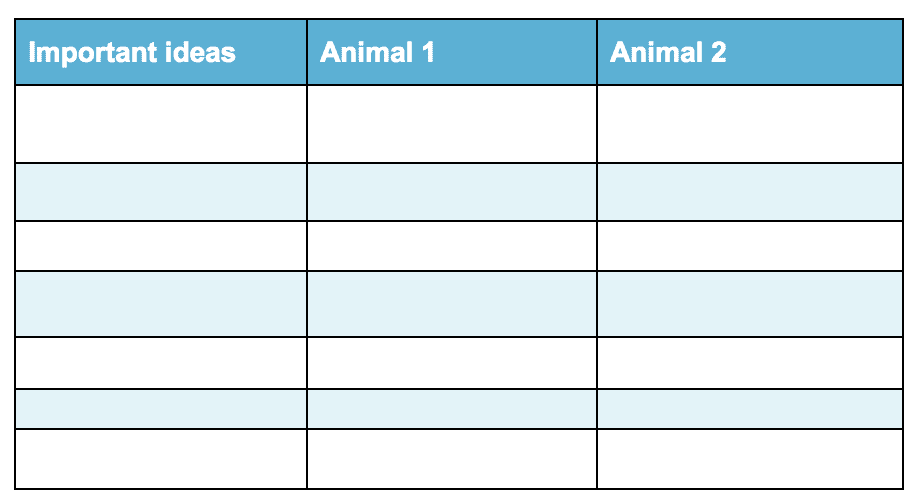Information for Teachers
Curriculum links
This investigation is linked to the following Grade 3 Next Generation Science Standards.
LS2.C: Ecosystem dynamics, functioning, and resilience
When the environment changes some organisms survive and reproduce, others move to new locations, yet others move to the transformed environment, and some die (3-LS4-4)
LS4.A: Evidence of common ancestry and diversity
Some kind of plants and animals that once lived on earth are no longer found anywhere (3-LS4-1)
LS4.C: Adaptation
For any particular environment, some kinds of organisms survive well, some survive less well, and some cannot survive at all (3-LS4-3)
LS4.D: Biodiversity and humans
Populations live in a variety of habitats, and change in those habitats affects the organisms living there (3-LS4-4)
How to search the internet
1 Keep your request short
Fewer words will give a more accurate search.
2 Choose exactly what you want
For example: Arctic Circle Climate
3 Use quotes
Double quotes around a set of words tell the search engine to consider those exact words in that exact order without any change. For example: “Arctic Circle Climate”
4 Use the plus sign (+)
If you add a plus sign (+) between words, the internet will search for all the words. For example: migrate+birds+whales+mammal
5 Use the minus sign (–) to say what you don’t want
Use a minus sign (–) to show words you do not want to appear in your results. For example: if you search for burrowing animals and do not want mammals in your search, –mammals will exclude mammals. Note that you need to put a space before the minus sign for the word to be excluded.
6 Be very clear about what you don’t want
Part 1
Ask questions and define problems
After reading Animals and their Ancestors, you may be surprised about the amazing changes that led to a modern animal.
List your questions–test
- Compare your list with questions that others have.
- Choose a question you would like to investigate.
- You can work alone, with a partner, or in a small group.
You may want to choose one or more of these questions to investigate
Q1. Choose a family of animals developed from a common ancestor that come in many shapes and sizes today. For example, dogs.
Q2. Find out how farm animals have been carefully bred by farmers to meet their farming needs. For example: cows to provide more milk or meat, sheep to provide more wool or meat, and pigs to provide more meat.
Q3. Find more information about animals that look much the same as they did millions of years ago.
Go to Part 2 Investigate →Part 2
Investigate
Helpful websites
You may want to use websites to help with your investigations.
You can use words like these in doing their search:
The+evolution+of+bears
Go to Part 3 Record data →Part 3
Record data
Find a way of recording your information that will allow you to see any patterns in the data.
Data Chart for the ancestor of modern bears
[Download and change to suit your information]
 Download Chart
Download Chart
Go to Part 4 Organize, analyze, and interpret data →
Part 4
Organize, analyze, and interpret data
1. Look over the information you have gathered and the patterns you have found.
Does any of this information surprise you?
2. Search for other patterns.
Which other animals are related to bears?
3. Make notes about what you find.
Go to Part 5 Present and share →Part 5
Present and share
Look over all of the information that you have gathered in your investigation.
What are the most important ideas about animal ancestry?
Make a chart showing the most important ideas.
 Download Chart
Download Chart
← Return to menu